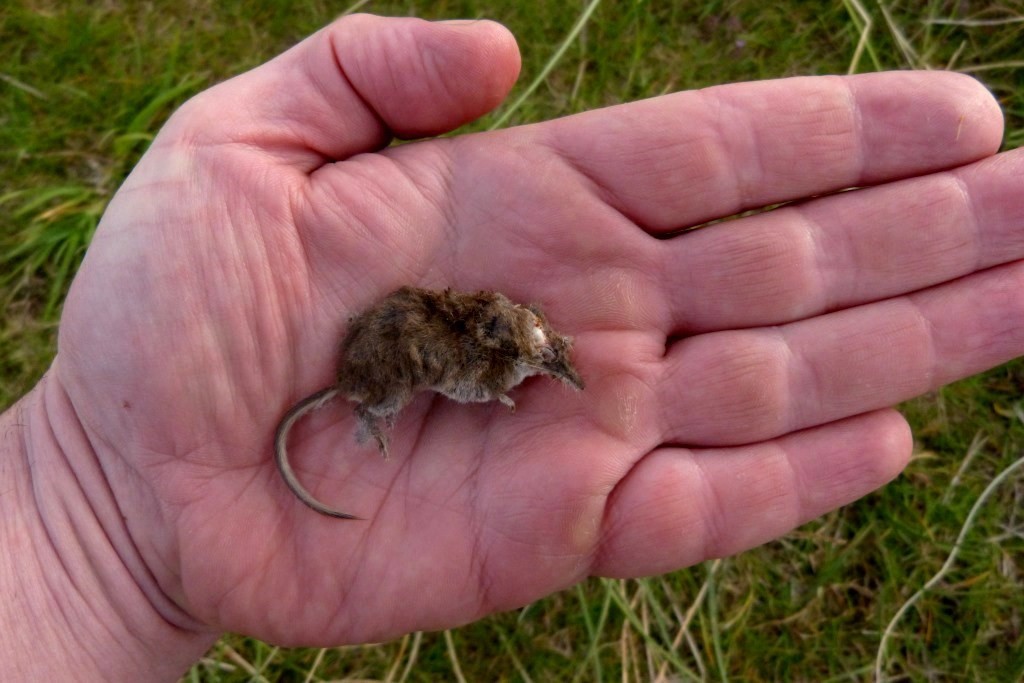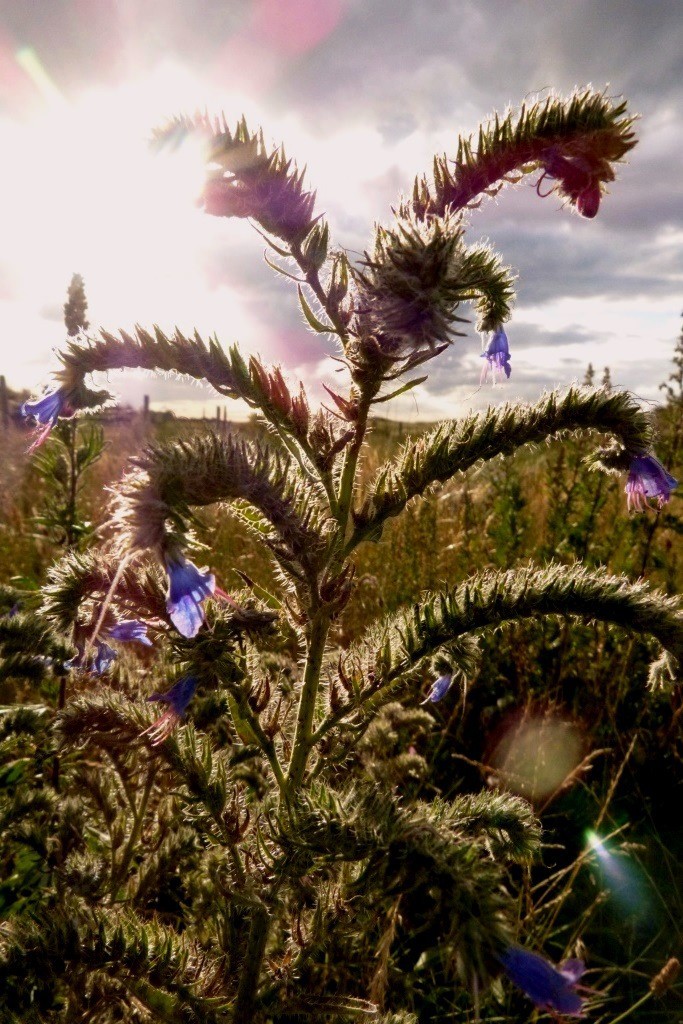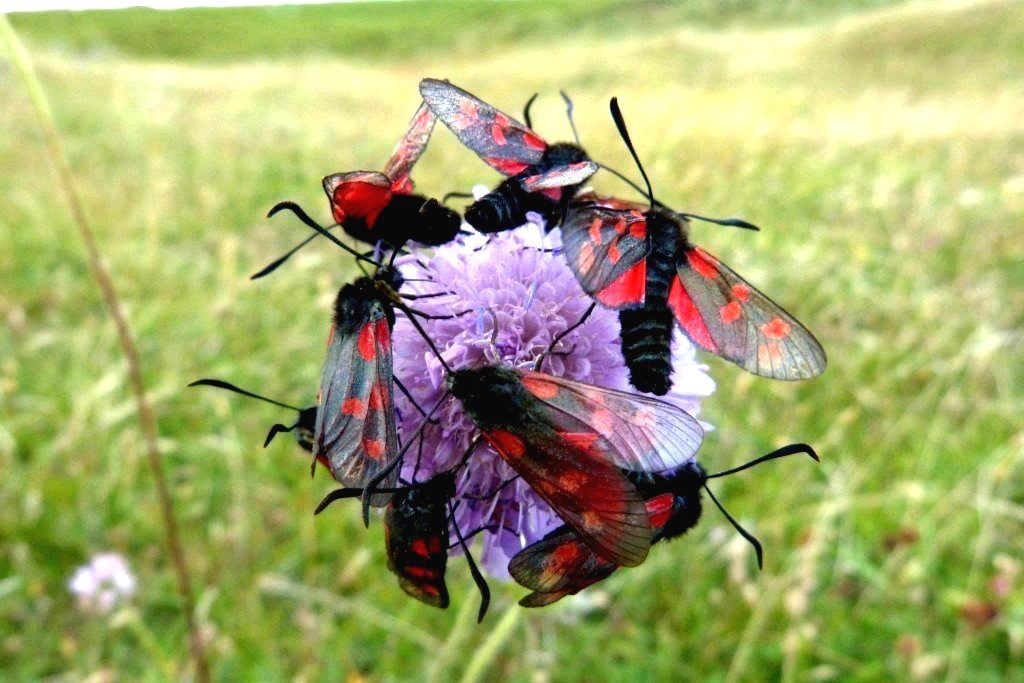By Sean Fagan

Sadly, shrews suffer from a relatively high mortality rate. The reasons are varied - starvation, predation by domestic cats and other predators or even territorial disputes between neighboring shrews. Whatever the reasons - they are a very fascinating member of our mammalian fauna - that somehow thrive despite many environmental pressures (Photo: Sean Fagan).
.
All Hail the Mighty Shrew...
Above, a gruesome but interesting photo of a deceased pygmy shrew I recently found on the dunes of Baltray, east Ireland.
As Ireland’s smallest native mammal, the pygmy shrew (Sorex minutis) has one of the fastest metabolic rates of any mammal species with a very large appetite to match its internal furnace (they must eat every two hours or so in order to survive - throughout every 24 hours of the day!)
This forces the pygmy shrew to be a formidable hunter of small insects and other invertebrates (because of their tiny size - pygmy shrews occasionally engage in vigorous battles with sizable prey such as large beetles and worms).
Weighing on average only 4 grams, the pygmy shrew is a true lightweight. To put this in context - a house mouse weighs on average a hefty 40-45 grams.
The incredibly hungry, fierce and inquisitive pygmy shrew is one mammal that punches well above its minuscule weight.
All hail the mighty shrew…
.
This might seem like an unusual departure from my usual writing about bushcraft and adventure - but it's not.
For many of us, bushcraft is about nature, with no divisible barrier between the two.
In fact, I'd wager a bet that many individuals that regularly go outdoors to practise bushcraft will not only appreciate nature at a much deeper level - but actually become more caring and considerate about nature.
.

It wasn't just the wildlife that was interesting on the dunes where I found the shrew - this superb Viper's Bugloss (Echium vulgare) was a joy to observe (Photo: Sean Fagan).
.
.
The Reality of Wildlife Encounters...
.
So whats with the shrew?
I chose the shrew because shrews are relatively common and can be often seen and heard in the wild.
When outdoors in wild places, most of us are very partial to any majestic wildlife encounters we may stumble upon or plan to witness.
Who doesn't want to see a red deer stag cresting a high ridge - its imposing silhouette evocatively emerging from a mountain mist?
Or to look up and see an eagle, soaring with tremendous grace and power, above our heads?
But the reality is that these type of wildlife encounters are often rare - even in wilderness areas.
What's far more common is the small stuff - the smaller, more common wildlife that inhabit a lot of wild places.
.
And how interesting they can be - because in the right frame of mind, I believe they are just as interesting and admirable as larger-sized wildlife.
.
Often, it's just a matter of altering our perspective and expectations and most importantly - fueling our curiosity with an open mind.
I shall be continuing this thread with further examples of commonly occurring wildlife in the future.
For now, trust me, there is often a treasure chest of wildlife right at our feet when we are out and about in nature...
.

Small is wonderful. On the dunes where I found the pygmy shrew I also came across a fantastic mass-emergence of the strikingly pretty 6-Spot Burnet Moth (Zygaena filipendulae). As they flew around they filled the air with a pleasant, humming sound (Photo: Sean Fagan, 6-spot burnet moths feeding upon the nectar of a Field Scabious (Knautia arvensis)).
.
.
Ancient Humans and Encounters of the Small Kind...
.
Let's not forget that a lot of bushcraft stems from the first bushcafters - our prehistoric, hunting and gathering ancestors.
These immensely resourceful, skillful and knowledgeable people greatly admired and often worshiped wild animals (both large and small).
In many instances they often tried to emulate certain attributes of wild animals - for example, stoat and weasel species was held in high regard by some First Nations tribes of North America because of their fierce, inquisitive and proactive nature when hunting.
Often, fathers would bring their children out to watch hunting stoats or weasels - in order to impart to them the importance of a curious and alert attitude when hunting.
.
If such small animals were worthy of the curiosity and respect of an ancient people - then why not us?
.
I wonder what we could all learn from the tiny but indomitable shrew?
.
.
“We need another and a wiser and perhaps a more mystical concept of animals. They are not brethren, they are not underlings; they are other nations, caught with ourselves in the net of life and time.” ~ Henry Beston
..
.
Related articles on this website:
.
*Check us out on Instagram, Twitter & Facebook for more outdoor-related topics..
Related Material:
- The Pygmy Shrew (The Vincent Wildlife Trust)
- Is the Pygmy Shrew under threat in Ireland?
- The Six-Spot Burnet Moth (Butterfly Conservation)
- The Irish Stoat (The Vincent Wildlife Trust)
- Viper's Bugloss (Wildflowers of Ireland)
- Henry Beston

Recent Comments